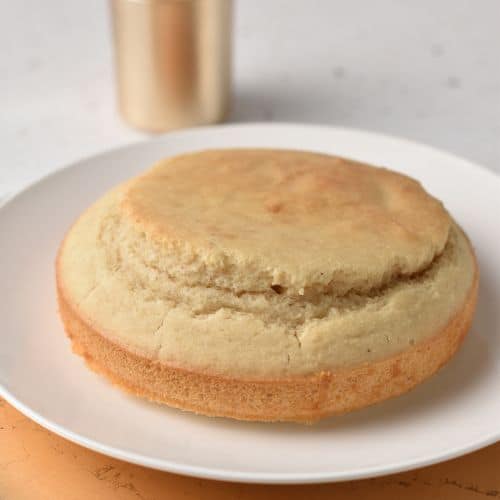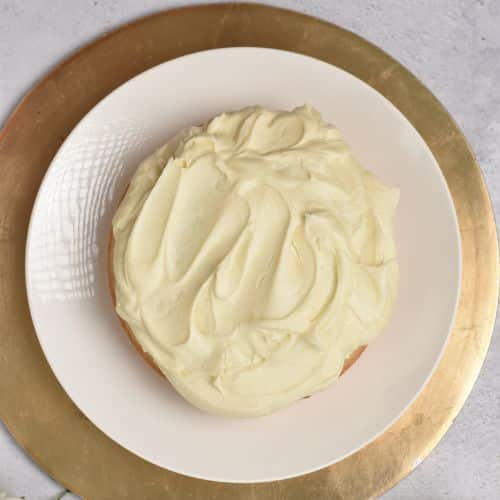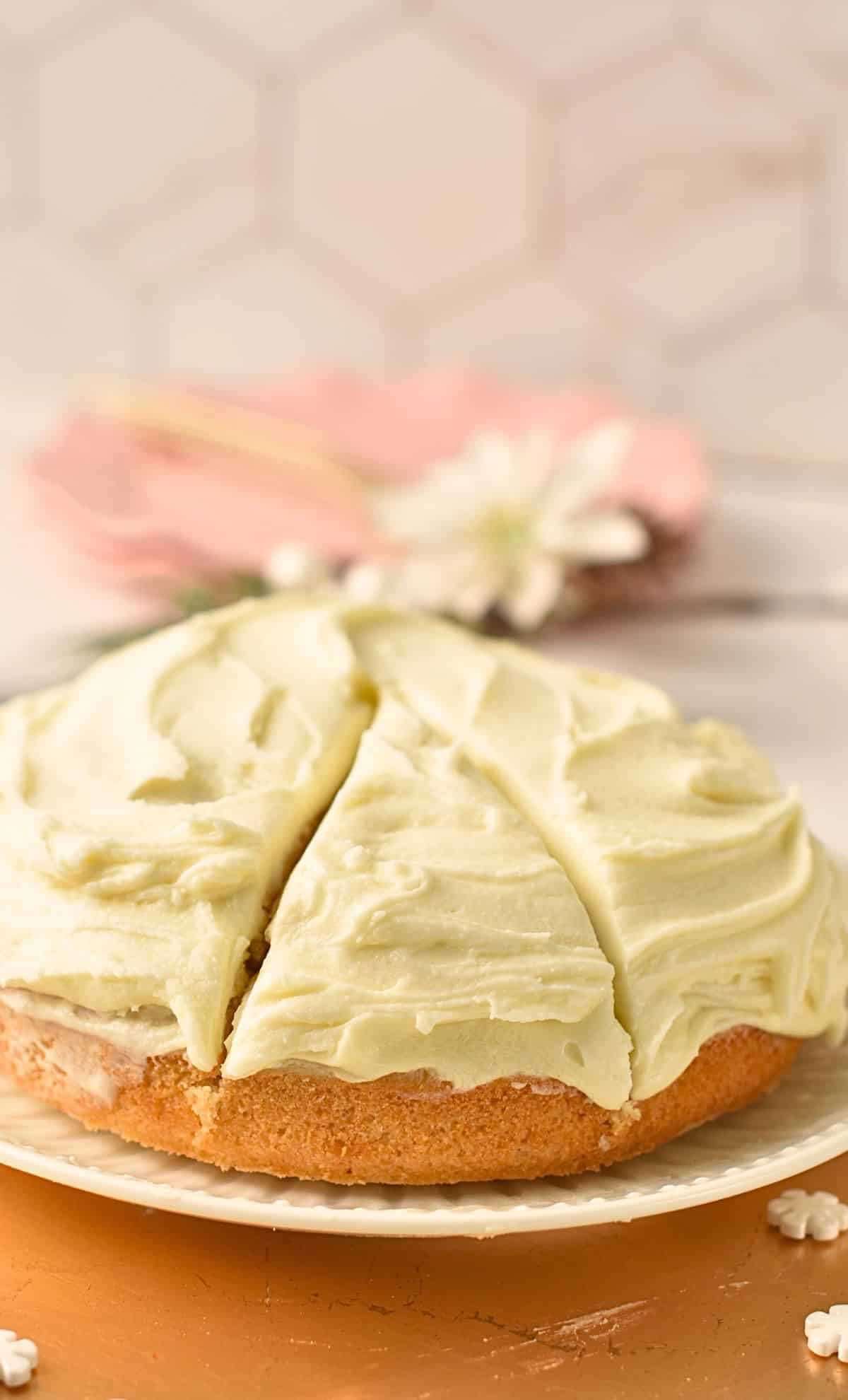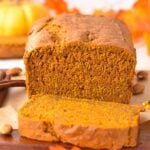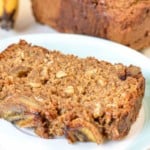Gluten is not my guts’ best friend. While I can eat some food with gluten, I’ve found that I get a much better balance when I avoid it as much as possible. I’ve already made super-simple Gluten-Free Pumpkin Bread and Vegan Gluten-Free Muffins. But when I want to celebrate, I like to make a cake. I’ve found that many gluten-free cake recipes are quite dry and dense, so I made it my mission to make a moist, soft, and fluffy vegan gluten-free cake. The result is amazing.
Ingredients and Substitutions
This cake can be made with just 6 base ingredients (7 with the optional vinegar). Here’s how to pick them.
All-Purpose Gluten-Free Flour – A good gluten-free flour blend with xanthan gum is crucial for achieving the right texture in this cake. The xanthan gum helps mimic the elasticity and structure that gluten typically provides, giving the cake a light and airy texture without falling apart. Make sure the blend includes starches like tapioca, potato, or maize for the best results. Almond Flour – Almond flour adds moisture and a soft, tender crumb to the cake. It also contributes to the nutritional value by providing healthy fats and proteins. If you’re looking for a nut-free alternative, you can try using sunflower seed or sesame seed flour, but avoid oat flour, as it would result in a dense, dry cake. Sugar – This recipe calls for a 1/2 cup of sugar, which sweetens the cake just enough. You can use any granulated sweetener, such as coconut sugar or even a low-glycemic option like monk fruit blends. If you prefer a sweeter cake, you can increase the sugar to 3/4 cup. Baking Powder – Baking powder is essential for making the cake rise and giving it a fluffy texture. Ensure that it’s gluten-free certified to avoid any potential cross-contamination with gluten. The baking powder ensure that the cake rises well and has a light texture despite the absence of eggs. Vanilla Extract – Vanilla extract enhances the flavor of the cake and adds a subtle sweetness. You can also experiment with other extracts like almond extract for a slightly different flavor profile. Almond Milk – Almond milk is necessary to bring the batter together, adding moisture and helping create a smooth, pourable consistency. You can substitute with any plant-based milk, such as soy or oat milk, if preferred. Apple Cider Vinegar – The acidity in apple cider vinegar reacts with the baking powder, giving the cake extra fluffiness. While the recipe can work without it, adding vinegar will make the cake lighter and airier. You can substitute lemon juice or lime juice for the same effect if you don’t have vinegar on hand.
How to Make Vegan Gluten-Free Cake
Making this gluten-free cake is ridiculously easy. Here are a few pictures to help you see the texture of key steps.
Decoration
I have many frosting options for you to decorate this cake!
Vegan Vanilla Frosting – The vegan version of the classic frosting recipe, made with only 4 ingredients. This is my pick when I want a classic frosting looks. Protein Powder Frosting – It’s an oil-free, sugar-free option with over 3g of extra protein per slice. Cashew Frosting – This is super simple, very healthy alternative made with cashews. Vegan Chocolate Frosting – A chocolate version of a simple vegan frosting. 3-Ingredient Vegan Coconut Cream Frosting – The easiest frosting recipe I’ve ever made, with just 3 ingredients.
Carine’s Baking Tips
While the recipe card below is enough to make a delicious cake, I’ve added here a few of my pro tips to make it 100% no-fail.
Storage Tips
Room Temperature: Store the cake at room temperature for up to 2 days in an airtight container. Refrigeration: You can refrigerate the cake in an airtight container for up to 4-5 days. Let it come to room temperature before serving for the best texture. Freezing: For longer storage, you can freeze the unfrosted cake for up to 3 months. Wrap it tightly in plastic wrap, followed by aluminum foil, and thaw it overnight in the fridge before serving or frosting.
More Gluten-Free Baking Recipes




